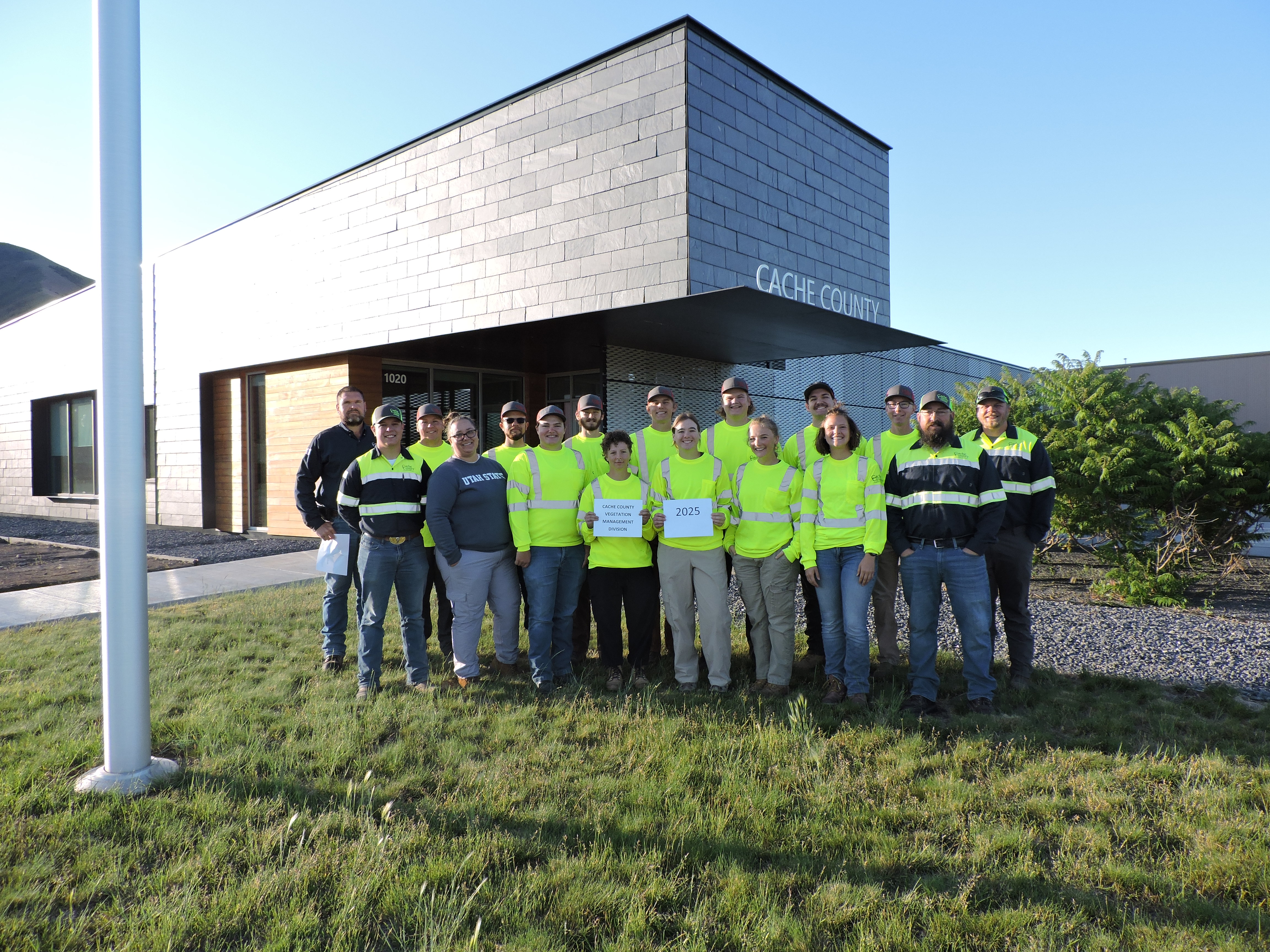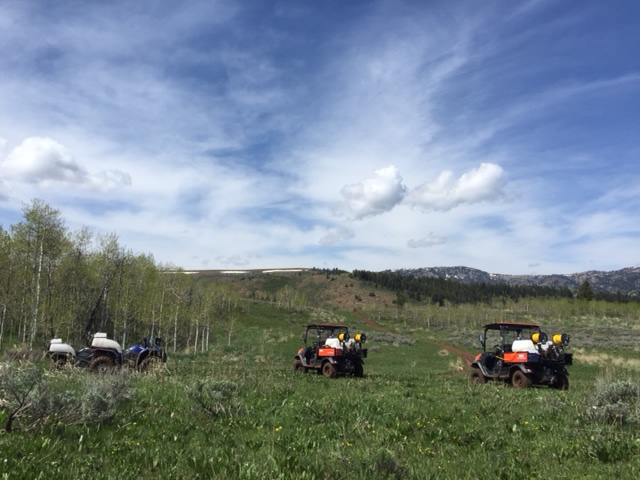Welcome to the Cache County Vegetation Management Division
Our Goal and Mission is to:"Uphold the State Noxious Weed Law, and assist Citizens in their Noxious Weed Control efforts."
There are currently 56 weeds that have been declared "Noxious/Invasive" by the State of Utah:
Cache County has declared 2 additional Noxious weeds.

2025 Crew
2025 Cache County Prioritized Weed List
2025 Cache County Notice to Control Noxious Weeds
If you have any questions or feel you need assistance, give us a call.
Contact Information
Noxious Weed Supervisor:
Jake Forsgren (435) 755-1562
email: jake.forsgren@cachecounty.gov
Office Hours: 8:00 a.m. to 5:00 p.m. Monday thru Thursday
1020 East 600 North
Hyrum, UT 84319
Question: What is a noxious or invading weed?
A: A weed is any plant growing where it doesn't meet your management plans. A noxious weed is a plant that is declared noxious, by the state or county, because it causes significant economic impacts within the state and/or county. An invading weed is a non-native plant that is newly established within the state/county and poses a threat of gaining noxious weed status.
Question: What type of property do you spray?
A: We spray noxious weeds on pasture, rangeland, road sides, railroads, and ditch banks. We do not spray weeds in residential lawns, crops, or parking areas. Private companies will be happy to spray these areas for you or you can find information about residential weed control here.
Question: What weeds do you spray?
A: We are committed by state law and county policy, to spray weeds on the state/county noxious weed list.
Question: When should I spray my noxious weeds and what should I use?
A: This is a difficult question to answer because many species of noxious weeds respond better at certain times of the year or with different herbicides. Generally, most plants respond well to herbicides in early growth stages, particularly annuals and biennials. Many perennials also respond well to fall applications of herbicide. However, a chemical that eradicates one weed may not affect another. Federal laws describe what chemicals may be used and where they may be applied. This information can be found on the label on the herbicide container. Read the labels. Contact the Vegetation Management Division for detailed information.
Question: How do I calibrate a sprayer?
A: An excellent source for calibration can be found here.
Question: Can I effectively control noxious weeds without chemicals?
A: Absolutely! Most annuals and biennials can be controlled by hand pulling or tillage. Biocontrol (pathogens, insects, herbivores, etc.) are available for several noxious weed species and can be used effectively in some large scale situations to reduce noxious weed populations, contact USDA-APHIS or the weed division for specifics. Competitive vegetation may be introduced or re-introduced to help control noxious weeds. However, these methods usually take a long time and likely will not eradicate the weed problem. These methods are meant to reduce noxious weeds to tolerable levels within the ecosystem. Fire without replanting competitive species generally exacerbates the noxious weed problem by increasing resources available to noxious weeds.
Question: Does the Vegetation Management Division spray mosquitos?
A: No, we don't. You can find information about the Cache Mosquito Abatement District here. You may also call one of the local pest control companies
Noxious weed laws and policies are established for the benefit of our environment. Everyone benefits from the control of noxious weeds.
Noxious weeds often become so prolific they can alter your native environments. They eventually displace desirable vegetation and wildlife, resulting in certain areas becoming unusable.
Below are links to the state and county laws and policies that affect noxious weed control here in Cache County.
To download a copy of the Noxious Weed Field Guide for UTAH click here
Cooperative Weed Management Areas
Cache County is involved with two Cooperative Weed Management Areas (CWMA's), Utah-Idaho CWMA and Northern Utah CWMA. Belonging to these associations has expanded Cache Counties fight against noxious weeds by combining efforts and resources with several other surrounding counties in Utah and Idaho including Bannock, Franklin, Oneida, and Caribou Counties of Idaho and Box Elder, Weber, Davis, Morgan, and Rich Counties of Utah.
Weed Control and Other Resources
Welcome to the Cache County Vegetation Management Division
Our Goal and Mission is to: "Uphold the State Noxious Weed Law, and assist Citizens in their Noxious Weed Control efforts."
There are currently 55 weeds that have been declared "Noxious" by the State of Utah.
If you have any questions or feel you need assistance, give us a call.

http://www.utahweed.org/